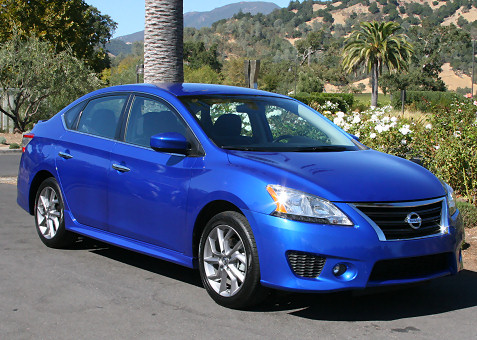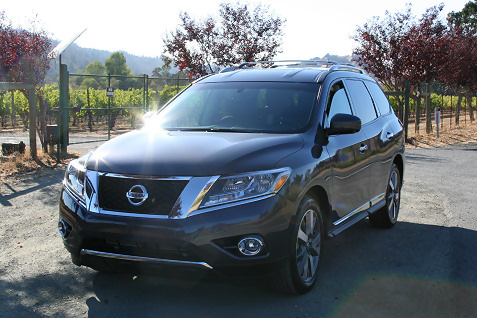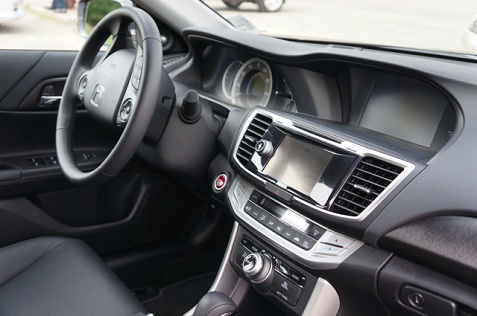First Drive: 2013 Nissan Sentra
I traveled out to wine country near San Francisco courtesy of Nissan to test drive the all-new 2013 Nissan Sentra. I was on hand in Dallas earlier this year when Nissan unveiled the redesigned Sentra and the new design looked impressive, but now I was getting a chance to drive it as well.
Exterior
The new Sentra features an elegant design that helps it stand out in the compact car category. Some competitors in the segment have gone with edgier designs, so the more refined look of the Sentra offers a nice alternative for consumers. The new Nissan front grille fits nicely on this vehicle and the rest of the design points flow naturally. Details like LED accented headlamps and tail lamps add to the overall look of the car. As you can see from the photos I took, the Sentra looks great from all angles.
Interior
The interior of the Sentra features upgraded soft-touch materials that set it apart from other options in the compact segment. The overall feel of the interior is stylish and upscale yet understated, so it fits well the exterior. It’s also very roomy for a smaller car. The overall comfort level in all of the seats was excellent.
Like the new Altima, the 2013 Sentra offers an all-new version of the Nissan Navigation system as an option with all sorts of features. NissanConnect with Navigation includes a Hands-Free Text Messaging Assistant that reads incoming text messages and allows drivers to reply without taking their hands off of the steering wheel. In addition, it also offers Pandora, 5.8-inch touch-screen display and Google Send-to-Car functions. Other tech options include RearView Monitor and Nissan Intelligent Key with illuminated push-button ignition switch and the Tire Pressure Monitoring System with Easy Fill Tire Alert feature.

Performance
The new Sentra is 150 pounds lighter than the previous model but also has slightly larger overall dimensions and more interior room. With a lighter vehicle Sentra also has an all-new and more fuel-efficient 1.8-liter engine with a generation Xtronic CVT. Fuel economy is rated at 30 miles per gallon city, 39 miles per gallon highway and a class-leading 34 miles per gallon combined.
The Sentra features both Sport and Eco mode options, which makes the driving experience much more enjoyable. In Sport mode the Sentra accelerates nicely and zips around curves no problem. It has solid acceleration and is fun to drive. The Eco mode is a great option for slow or casual city driving. The overall driving experience was impressive for a car of this size.
Overview
Overall, the new Sentra remains an excellent option in the compact car segment. It’s very competitive on features and gas mileage, and the look of the car will definitely attract a wide variety of buyers. Pricing for the Sentra starts at $15,990 with the fully equipped SL priced at $19,760.
You can follow us on Twitter and Facebook for content updates. Also, sign up for our email list for weekly updates and check us out on Google+ as well.
Posted in: Car Reviews, Cars
Tags: auto tech, automobile gadgets, autos for guys, autos for men, car gadgets, car info for men, car photo gallery, car photos, car slideshow, car tech, car tech features, compact cars, connected autos, connected cars, first drive, first drive automobile reviews, first drive car reviews, first drive reviews for guys, first drive reviews for men, new automobiles, new autos, new cars, nissan, Nissan Sentra



























































